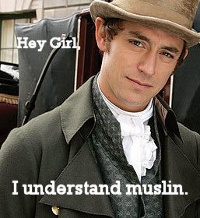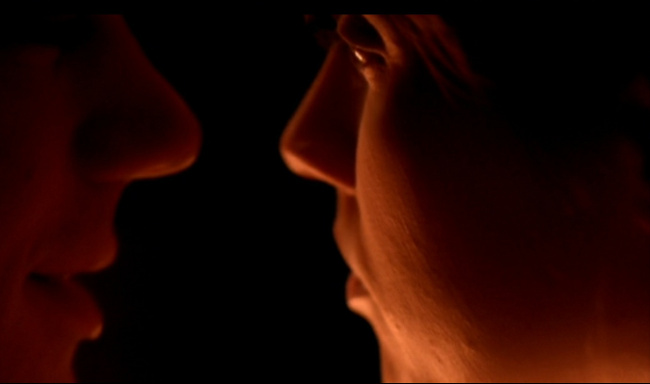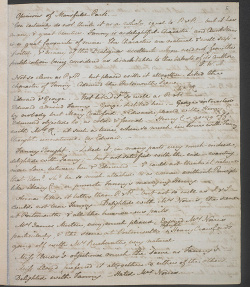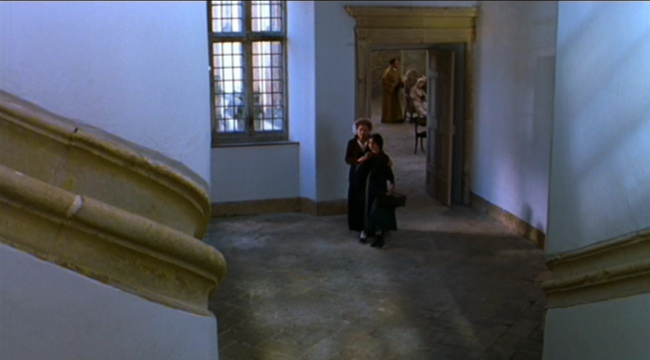|
when I was a graduate student in the late 1990s writing a dissertation on mid- to late eighteenth-century women novelists’ constructions of the woman reader, my director encouraged me to end with a “Why Austen? Why Now?” chapter. I was unequal to the task. I did not know why Austen adaptations had proliferated in the mid ’90s beyond what I had learned when I worked as an intern for a film producer in the late ’80s: in the fiscally conservative film industry, if the formula worked once, stick to it. Yet the questions have followed me through the years.
My approach to teaching Austen at the dawn of the twenty-first century is predicated on the idea that college teachers must take into account the ways in which our students gain exposure to certain literary canons that we too often taken for granted. For most students, Jane Austen is a decidedly contemporary figure. Many students now cite a film or television production as their first and sometimes only exposure to Austen. In an era of proliferating Austen adaptations, it is essential to give students for whom Keira Knightley is Elizabeth Bennet (and vice versa) some analytical apparatus for examining what they see. I would argue that we are compelled to offer students a framework not only for the historical study of Austen’s six published novels and her manuscript works but also for the sustained examination of some of the recent movie adaptations and popular culture spin-offs of her work.1 In my course, “Jane Austen: Then and Now,” students closely read Austen’s novels in relation to the social and cultural conditions of late eighteenth- and early nineteenth-century Britain, interrogate their place in the development of the English novel, and consider their continued relevance in our own time, resplendent with variations on all things Austen.
Though courses devoted to Austenmania are nothing new, engaging students rigorously with both the source material and the adaptations can be a challenge on multiple levels. First, there is the sheer quantity of material to consider. Second, there is the problem of engaging with different time periods, multiple genres, and a variety of geographical contexts (popular film adaptations have been produced in America, Britain, and India; for example, Bride and Prejudice was shot in all three locales, in part to adhere to stipulations dictated by multiple sources of funding, including the UK Film Council).
Few of us would consider ourselves experts in all of these areas, thus the temptation to show a few movies simply to supplement the novels. Finally, both because of some of the economic pressures on American universities and Austen’s ongoing popularity, the student populations we serve in an Austen course can be extremely heterogeneous. College professors who do not teach graduate students or specialized seminars that address a specific topic must craft courses that appease administrative concerns that we fill seats while also meeting multiple program goals. Maintaining one’s pedagogical integrity can be difficult under these circumstances. I have found that a course focused on Austen’s works and popular culture is beautifully situated to address these multiple, competing forces.
My course serves a broad constituency that includes Janeites and neophytes: English majors fulfilling a British literature requirement; Gender and Diversity Studies program students seeking an upper-level course that addresses race, nationality, religion, class, sexuality and gender; Master’s in Education students seeking secondary education integrated language arts certification; and any interested undergraduate who may take the course for his or her core literature requirement. The challenges of engaging these many different kinds of students with older, sometimes less accessible texts and the challenges of provoking students to think critically about our own culture’s popular texts and artifacts can be ameliorated when the old and the new are juxtaposed. Students who have difficulty accessing the foreign (British) and distant (two hundred plus years ago) context of Austen’s work, especially those just looking to get their British literature or core literature requirement in a Jane Austen course, are often engaged by the modern adaptations. Students who scoff at the recent Austen “chick flicks” are often attracted to the promise of studying a literary figure whose work is important enough to merit her own course—notably, the only other single author course among the English department’s offerings at my university is on Shakespeare.
The benefits of reading recent critical work on the Austenmania phenomenon include both dispelling the notion that popular culture is not a worthy subject for scholarly inquiry and encouraging the critical exploration of popular culture phenomena that students may consume largely without any critical forethought or analysis.2 In the first week of the term I have students read Claudia L. Johnson’s “Austen Cults and Cultures,” one among many excellent essays I assign from The Cambridge Companion to Jane Austen. Johnson explores some of the ways that Austen’s work has been read as and claimed for both “high” and “low” culture, and the ways in which those terms are often gendered masculine and feminine respectively. Johnson’s essay thus provides touchstones for both Janeites and Austen scholars while also contextualizing the debate for students who do not have any grounds for siding with either camp. Judy Simons’s work on how Austen’s writing has inspired continuations and adaptions since the nineteenth century is also useful here. In “Jane Austen and Popular Culture,” Simons cites Austen’s avid interest in the pop culture of her day and the themes in her work that implicate the trends and tropes of her contemporary context, such as consumerism. Another example is Devoney Looser’s accessible “Feminist Implications of the Silver Screen Austen,” which argues that competing discourses of neo-conservative nostalgia and progressive liberal feminism mark the 1990s representations of Austen’s works. Because Looser’s essay addresses the ’90s adaptations, it models for students the cultural work film can do while still leaving open the question of why the adaptations continue well into the twenty-first century, a question I ask them to address repeatedly throughout the course. Ultimately, I believe that students must do their own close reading of popular culture to adequately synthesize understanding. To that end, analysis of pop culture artifacts is a key component of my Austen course. This aspect of the course keeps students engaged with source material from their own lives but in an intellectually rigorous way.
We come back to the meaning of the action figure throughout the term. I ask again after we discuss Jan Fergus’s essay on “The Professional Woman Writer,” which emphasizes the ways in which posthumous packaging of Austen’s persona, such as the biographical pieces by Henry Austen and Edward Austen-Leigh, downplayed her literary professional aspirations and acumen in favor of an image of the genteel amateur, the proper lady novelist. Plastic Jane’s quill and writing desk begin to read more easily as sword and shield. And I ask again at the end of the course, when we have contextualized Austen and her work through not only historical but also feminist, queer, Marxist/materialist, and postcolonial theoretical lenses. At the end of the course, Jane Austen’s Fight Club can be seen not only as a swipe at propriety but also a potentially subversive feminist read of Regency social conventions, overtly satirizing what Austen sometimes gently, sometimes not so gently, parodied herself.3
“Jane Austen’s Fight Club” © Relatively Badarse Productions, 2010
Let me provide one more extended example of a popular culture artifact I analyze toward the end of the class to illustrate how such items can serve as more than comic relief in the classroom, since the humor is most thoroughly enjoyed by those with the deepest understanding of the social and historical interplay. The artifact is a clip from the British comedy sketch show That Mitchell and Webb Look, a spoof of the Meryton assembly scene in Pride and Prejudice. In the clip “Posh Dancing,” Robert Webb’s Mr. Darcy rudely refuses to dance on the grounds that “a gentleman does not conga,” leaving several young ladies out of the “boy-girl-boy-girl” dance line.
“Posh Dancing,” That Mitchell and Webb Look © BBC Video, 2009
At first, students think the payoff is when Darcy casts an angry aspersion at the ever-pretentious, mewling Caroline Bingley in decidedly twenty-first-century informal diction—just the sort of confrontational and raunchy expression of emotion that Austen rarely indulges under the rules of genteel Georgian society. Since those rules often frustrate modern readers of her work, Darcy’s telling off Caroline Bingley proves deeply satisfying for many. But the real heart of the joke lies in Mr. Darcy’s demonstration of the skills that have won him the title of “Freestyle Disco Champion of all Derbyshire these last dozen years,” notably set to a harpsichord version of Britney Spears’s “Baby One More Time.” Thus the parody relies on both Austen’s original work and the recent phenomenon of Austen heritage films that require at least one scene devoted to a country dance. The climax of the sketch turns on the ways in which heritage films, or what my class comes to call “heritage crack,”4 foreground repressed sexual tension and nostalgia for the Regency era, often depicted as or perceived to be more genteel and tranquil than our own.
The sketch also provides an opportunity to discuss how recent adaptations and continuations of Pride and Prejudice, from the 1995 miniseries to P. D. James’s Death Comes to Pemberley, center on the representation of late eighteenth- and early nineteenth-century masculinity. While Austen’s novel provides Elizabeth Bennet opportunities to upbraid both Darcy and Lady Catherine de Bourgh, albeit with more elegant diction than Webb’s Darcy uses, Darcy’s grievances and emotions are often borne more stoically, producing the effect, as E. J. Clery puts it, of “‘estranging’ the reader and the heroine from the hero, refusing access to his thoughts and feelings” (168). Therein lies one possible explanation for the pleasure viewers receive from Darcy’s linguistic and performative release in the Mitchell and Webb sketch, rendered comic through its stiffness and anachronism and its play on Austen’s own gendered reversal in crafting a bold heroine and a restrained hero.
Because popular culture is so fluid and students are often aware of items that I am not, I have had students spontaneously bring in their own artifacts for informal show-and-tell sessions, from “Hey Girl, I understand muslin” memes to graphic novels. I have subsequently formalized a pop culture artifact presentation as a means of keeping the conversation about the “now” in perpetual play throughout the term and encouraging more complex considerations of the meaning of these artifacts.5 In addition to inviting students to gather popular culture references, the artifact presentation is meant to help them think about the continued relevance of the topic they choose for the more traditional research paper assignment, a close reading of a narrow aspect of one of the novels, fully contextualized and supported by historical and literary critical secondary source material. The research paper assignment expressly asks students to address the implications for both “then” and “now,” perhaps in an extended conclusion about why the issue still speaks to us today, perhaps by incorporating analysis of a recent adaptation or continuation that we did not discuss at length in class.
Since the film adaptations remain the most visible (no pun intended) and extended modern adaptations of Austen’s work, I believe they demand and deserve rigorous scrutiny in the college classroom.6 To that end, I employ some of the methodology of a film studies course, including a requirement that all films be screened outside of class to prepare for discussion on the days they are listed on the course schedule. After we complete our discussion of Austen’s Sense and Sensibility, we spend one week at the beginning of the term analyzing the 2008 BBC miniseries adaptation of the novel, directed by John Alexander. We discuss the shot and the cut, scripting, and casting as an entrée to the semester-long exploration of adaptation as a form of interpretation. Students appreciate class time spent analyzing the brief opening scene, where an unidentified shadowy figure (Willoughby) seduces a likewise unnamed, verbally reluctant but panting young girl (Eliza) by firelight, only to gallop away in the rain the next day. The scene is dark and the actors’ bodies are shot only in pieces, close up. The sounds of the girl’s uneven breathing are heightened as a man’s hands and lips touch her trembling body parts. The dialogue, including her question, “Do you truly love me?” and his response, “Trust me,” is quietly layered into the slowly swelling music of the soundtrack, a contrast to the louder sounds of her uneven breath. As the man rides away the next day, the girl watches from inside, her face framed by an interior window, shot through the rain from outside, and then the opening credits begin to roll.
In addition to setting up the film as a “bodice ripper” of sorts, the opening scene establishes several significant formal and thematic elements. First, it offers some satisfying insider knowledge to close-reading Janeites via references in the very brief dialogue to “Mrs. Edwards.” “Mrs. Edwards thinks you’re a child still. But we know better than that, don’t we?” croons Willoughby as he unties Eliza’s chemise. Ardent fans of the novel enjoy the privileged knowledge of recognizing the players in this scene immediately, but many of my students, who have notably just read the novel the week before, do not understand it until the secrets of Willoughby’s past are revealed much later in the miniseries. This is not necessarily an interpretive failure; the scene is clearly meant to establish a mystery to be solved for those who are not devotees of the novel, consequently broadening the market for the film. This scene also evokes the oft-used Austen-adaptation image of women contained in window frames and thus locked into interiors, thereby offering opportunities to discuss both tropes of domesticity and Austen’s use of gothic elements in the novel. Finally, it provides a lovely parallel to Marianne’s fevered panting during her grave illness at Cleveland that can inform a discussion of the erotics of sensibility. The latter scene employs fetishizing shots that parse a sweaty Marianne, prone in a large bed, lit only by firelight, with close-ups of her open mouth and arching head accompanied by the sounds of her labored breathing.
We also discuss why Andrew Davies—who wrote the screenplays to this film, the 1995 Pride and Prejudice, and the Bridget Jones’s Dairy franchise as well as the 1996 BBC Emma and 2007 ITV Northanger Abbey adaptations—has written such successful films based on Austen’s works. I show the wet-shirt scene from the 1995 Pride and Prejudice miniseries, contextualizing for students who are not aware of that cultural phenomenon, and then the scene in the Sense and Sensibility miniseries (which runs 180 minutes and thus is a somewhat more realistic assignment than the 300-minute Pride and Prejudice) where Dan Stevens’s Edward Ferrars chops wood in the rain. This inspires a discussion of “chick flick” prurience and retroactive star effect in light of Stevens’s more recent turn as Matthew Crawley in Downton Abbey. In preparation for this class session, students read a Q&A and watch an interview with Andrew Davies to gain insight into his interpretive choices.7
Finally, we view some clips from Ang Lee’s 1995 Sense and Sensibility and read scenes from Emma Thompson’s screenplay for the film. The choice of scenes we discuss is usually dictated by our previous in-class discussion of the novel. I have often focused on comparisons between the versions of the scene where Lucy tells Elinor that she and Edward Ferrars are secretly engaged to follow up on discussions of the theme of sisterhood, broadly conceived, in the novel. The shooting script for this film version is widely available and serves as a model for how to format a screenplay since students will write their own film scene later in the term.8
The cultural echoes between moralistic concerns about novel reading in Georgian Britain and the consumption of various forms of media in our time also offer a rich field for cross-pollinating ideas about Austen’s works both then and now. The novel was indeed “novel” in the late eighteenth century—a new, popular form of expression, considered by many to be sub-literary and associated with individuals customarily disenfranchised by a now rapidly reforming aristocratic culture. Thus a course on Jane Austen, whose famous defense of novels in Chapter Five of Northanger Abbey enters the debate about the social utility of novel reading, necessarily draws attention to the history of the novel genre and its readers. Because so many members of the middle classes, and women in particular, numbered among the new writers and readers of this new form, many moralists and cultural commentators fretted over its social and moral impact on readers. Novels appealed to the purportedly malleable minds of the, again purportedly, less intellectually experienced sectors of the population—women, children, and eventually the working classes. Though reading the work of Austen’s contemporaries is not realistic in a course that already seeks to tackle all of the novels and multiple modern adaptations, discussing the ways in which Austen deploys and parodies sentimental and gothic literary conventions coupled with Isobel Grundy’s essay on “Jane Austen and Literary Traditions” can serve to contextualize Austen’s place in the development of the novel. It is vital that we acknowledge the ways in which Austen’s work built upon her predecessors and has only come to represent the realist novel that most students associate with the form today via the long process of canonization and literary historiography.
Jane Austen’s place among Anglophone women writers is also of central concern in a class that seeks to explore the interplay between her works in their own context and their meaning to us now. We now acknowledge, however grudgingly, how genres dubbed “chick lit” and “chick flicks” often include Austen’s works and film adaptations; subsequently gender underpins much of my Austen course conceptualization. Austen wrote at a time when it was still potentially risky for a woman to do so, negotiating pressures on proper feminine reputation with the public endeavor of publishing. Virginia Woolf famously argues, “[T]owards the end of the eighteenth century a change came about which, if I were rewriting history, I should describe more fully and think of greater importance that the Crusades or the Wars of the Roses. The middle-class woman began to write” (65). Of course, Woolf participated in the very revision of literary history she sought. We can now explore the ways in which Austen’s writing fits into not only British literary history and the history of the novel but also a tradition of women writers who came before and after her. Austen’s canonization where her sister writers’ efforts have been too often neglected, must at the very least be addressed, especially in a course that focuses on one author for sixteen weeks. Why Austen? Why not Hannah More or Maria Edgeworth? Did Austen’s work defuse the threat posed by feminized, sentimental novels of the mid- and late eighteenth century via “ironic containment” (62), as Clifford Siskin suggests, or did it seek to champion sister-writers Burney and Edgeworth as the narrator of Northanger Abbey exhorts fellow novelists: “Let us not desert one another” (37)? Was Austen’s canonization owing to her descendants’ careful efforts to craft the spinster-aunt persona, or was it aided in part by the men who championed her work around the turn of the nineteenth century, as Claudia L. Johnson contends?
It is also fruitful to explore with students the ways in which eighteenth- and nineteenth-century concerns about susceptible audiences sound quite familiar to us today. Can visual media corrupt our youth? How do movies affect and shape our beliefs? How do they reflect already shared or emerging cultural views and values? Is gender still a vital term in these debates? How does gender inform genre? In my course, we discuss the first film adaptation on the syllabus with emphasis on film form and function but without the aid of any external critical readings on adaptation. I ask the students to watch the film closely (in itself often a new experience) to determine what criteria they use to deem a film “good” or “bad” and then ask them to examine in a short writing assignment whether or not they think this is a good adaptation of the text, citing specific examples from the film. What emerges is usually a discussion about textual fidelity, characterization, heritage imagery, and, ultimately, the themes of the original novel. When my students begin to ask in what ways the film adaptation illuminates or obscures what we have already discussed in class as potential meanings for the novel, our ideas about fidelity to the text necessarily shift from plot and character to, in my mind, more rich and complicated discussions of meaning. It is then gratifying to read how some professional critics define what constitutes a “good” adaptation and how genre and desires of the audience enter into such evaluations.9
When addressing the question of whether a film’s “fidelity” to its novel source is a good measure of its value, it is helpful to acknowledge the tension between the values of academic film scholars versus popular audiences. John Wiltshire argues that Austen films cannot be judged as stand-alone texts. Wiltshire notes that the existence of multiple “treatments of the same novel impels the viewer toward comparison” (“Afterward” 170). Those multiple versions are necessarily in conversation with each other. This thesis intersects productively with Judy Simons’s argument that Austen herself did not seem particularly hung up on the “high” versus “low” distinction and with Henry James’s oft-cited derisive concern that Austen had become “our dear, everybody’s dear, Jane.”10 Armed with some of the tools of film scholarship, my students are able to interrogate the subsequent filmic interpretations of the novels we view in relation not only to the historical context of Regency Britain and what may have been foremost in the minds of Austen’s readers, but also to the needs and desires of modern audiences who consume both the novels and the films.
Primed by the earlier attention to the ways in which films are crafted and periodical short writing prompts asking them to analyze the relationship between craft and theme in the films, students are able to offer insightful commentary about not only narrative and character but also mise-en-scène, the gaze, lighting, and camera angles and shot choices in film adaptations.11 This discussion also helps lay the groundwork for one of the major course assignments—a screenplay adaptation of a scene from Northanger Abbey, the one novel for which we do not view any adaptations. The screenplay assignment seeks to integrate student knowledge about film craft with close study of the source text and measured consideration of what constitutes a “good” adaptation for them. Students write a script for one scene of a film adaptation of Northanger Abbey and analyze it in a pitch to potential financial backers. I ask students to base their choices on interpretation of the novel’s significant themes and the criteria we have developed for evaluating adaptations, including essays such as John Mosier’s “Clues for the Clueless,” which contends that an adaptation “worthy of Austen” has yet to be made (251). In the pitch to an audience of prospective producers or financial backers, students need to identify a target audience; clarify their overall creative vision; address setting, costuming, casting, etc.; and explain interpretive choices, including when to use Austen’s precise language and plot choices, and when to tweak, delete, or add to them. The purpose of the pitch is to illustrate knowledge of the source text and convince potential producers to invest in this movie. Ultimately, the screenplay assignment and the sustained interrogation of some of the film adaptations of Austen’s work are meant to prompt students to rethink the novels themselves.
While I have so far concentrated on ways to analyze the modern and popular culture Austen, let me offer some detail about how I try to synthesize close reading, exploration of recent critical and theoretical approaches to Austen’s work, historical contextualization, and methodologies and approaches from cultural studies and feminist theory to encourage understanding of the novels and the interplay between then and now. Reciprocal interpretations of the novels and the films ultimately enrich and inform understandings of both. One example from my course is a three-week unit on Mansfield Park that includes criticism of the novel, responses to the novel that Austen herself recorded, selections from the juvenilia, and Patricia Rozema’s 1999 film adaptation.
Modern students often find reading Mansfield Park less pleasurable than Austen’s earlier work because of Fanny Price’s passivity and the novel’s seemingly conservative, didactic tone. In general, I let student concerns guide discussion, prompted by very short writing assignments that require close reading. I might specifically direct the class discussion of certain scenes, such as the trip to Sotherton, to explore the uses of landscape, the influence of dramatic conventions on Austen’s writing, and gendered and class-based power relations. The dramatic comedy enacted by the inappropriately matched couples “lost” in the neatly tended “woods” of Sotherton evokes A Midsummer Night’s Dream while Maria Bertram’s invocation of Sterne’s starling gives the scene a darker edge. Aided by Henry Crawford, Maria proceeds to “‘pass round the edge of the gate’” (99) to which only her fiancé holds the key, aligning women’s oppression and entrapment with the larger British imperial context that haunts the text. A slave economy underpins the gentry lifestyle Maria is loath to forfeit, and while Fanny Price “feel[s] all this to be wrong” and protests, “‘You will hurt yourself, Miss Bertram’,” some readers then and now surely experience sympathy for Maria’s desire to “‘be more at large . . . and allow yourself to think it not prohibited’,” as Henry Crawford puts it (99). I also spend time on the vexing Portsmouth scene, which again raises the issue of gendered and class-based power relations, and primes students for Edward Said’s argument about the novel’s use of space as indicative of European colonization. Other themes discussed during our analysis of the novel include sibling bonds and the figure of the patriarch, with reference to the ways in which the patriarchy depends on slave labor and the colonial economy.
So that students can see facsimiles of Austen’s writing and get a sense of the material literary culture of the period, we spend part of one class period exploring the Jane Austen’s Fiction Manuscripts website. While students are asked to read “Opinions of Mansfield Park” prior to class, I do project images from the site on screen during class. We look at Austen’s manuscript revisions of her notes and extrapolate some hypotheses about her writing process. My students do not have access to an archive or to databases such as Early English Books Online and Eighteenth Century Collections Online, yet I want them to be able to see some texts that illustrate the conditions of production when Austen was writing. We also discuss Austen’s readers’ responses to the novel and why and how she recorded them, including the fact that she clearly solicited many of them. Reactions center on characterization and the Portsmouth scene, for example: “Liked the character of Fanny. Admired the Portsmouth Scene. —Mr. K. —”; “Mrs James Austen . . . Enjoyed Mrs Norris particularly, & the scene at Portsmouth”; “My Mother—. . . Thought Fanny insipid”; “My Eldest Brother . . . Delighted with the Portsmouth Scene”; “Mr. B. L.—Highly pleased with Fanny Price—& a warm admirer of the Portsmouth Scene.” Discussion of responses to the novel “then” provides a provocative corollary to students’ own mixed responses to the novel “now.”
In the following week, we address some scholarly criticism of Mansfield Park. I turn the class over to two small groups of students who have written reviews of either Edward Said’s “Jane Austen and Empire” or Misty Anderson’s “‘The Different Sorts of Friendship’: Desire in Mansfield Park.” For this assignment, students lead the class discussion of the essay via a formal group presentation, first summarizing the main argument and then asking pointed discussion questions and fielding responses. By the time we read Said’s enormously influential critique of the novel, the students are well prepared to engage with his arguments’ merits and drawbacks. Though I arrive ready to provide some of the rejoinders to Said’s contention that Mansfield Park exemplifies an imperialist mindset, I find the students able to get there easily on their own.
In general my students are more widely in agreement with Anderson’s analysis of desire in the novel and able to make connections to our earlier discussion of sibling bonds as potentially queering the text. They appreciate Anderson’s close reading and her argument’s grounding in narrative theory, but I am most pleased that this essay makes students rethink the utility of Eve Sedgwick’s (in)famous, “Jane Austen and the Masturbating Girl,” which we read early in the semester. They clearly understand how Sedgwick’s provocation makes Anderson’s work possible, and value it more highly in retrospect than they do in their initial, largely skeptical reading. Thus the Mansfield Park unit allows many of my students who have no background in literary theory to productively access even dense postcolonial and queer theories.
Finally, we read two brief selections from Austen’s juvenilia, “Henry and Eliza” and “The History of England,” to establish Austen’s satirical, youthful voice and to acknowledge some of Patricia Rozema’s source material for her film adaptation of the novel. The professional criticism of the novel and the juvenilia give students a strong base for analyzing Rozema’s interpretive decisions. Most students are very enthusiastic about the film and eager to discuss why it was not a box office success despite their belief that it is a compelling interpretation of the novel that clearly engages with both modern popular criticisms (Fanny Price’s passivity) and scholarly concerns about the source text (desire, the imperial economy). We discuss Rozema’s use of a staged freeze frame and breaking of the fourth wall in the film’s final scene to convey some of Austen’s characteristic irony, a stylistic feature that poses a conundrum for many more traditional heritage films.
We also look at some of the early scenes when the young Fanny arrives at Mansfield Park to analyze the sparse set design. The manor house, characterized by large spans of bare walls, stone floors without carpets, and vast expanses without furnishings, curtains, or décor of any sort, causes all of the dialogue to echo slightly.
Fanny’s insignificance is amplified by the absence of the crush of detail common to many heritage film adaptations of Austen’s novels and the booming voices of Sir Thomas and Mrs. Norris. My most recent group of students argued that this artistic choice follows from Austen’s own lack of descriptive detail. They deemed Rozema’s the best adaptation of an Austen novel we viewed in the course for its “translation” of “spirit or some emotional charge,” as Kathryn Sutherland articulates one means of judging the value of an adaptation (217). Rozema’s decision to fuse the character of Fanny Price with the more lively juvenilia and to foreground that which is met with “a dead silence” (MP 198) in the Bertram drawing room—the slave trade—can also inspire a rich conversation about how adaptation is a form of translation that “gestures to a reciprocity between languages” and “is always a transformation” (Sutherland, “Jane Austen on Screen” 217).
A solid grounding in Austen’s historical context is, of course, essential to understanding the novels, but it is also key to analyzing the adaptations. Austen’s writing provides insight on social and sexual mores as well as social and economic class. But her novels also consider the slave trade and the cost of Empire building in terms of both war and human greed. Thus my class explores not only the ways in which Austen’s work responds to and reflects the major social issues of her time—including the Napoleonic wars, the abolition of the slave trade, gender inequity in property laws and customs, and the human costs of maintaining the landed gentry—but also the ways in which modern adaptations either incorporate or, more often, ignore these themes. We examine closely how and why many contemporary Austen adaptations whitewash these difficult issues and why an adaptation such as Rozema’s that does explore these themes did not enjoy popular acclaim when it was released.
Historical contextualization is a daily activity, integrated into every discussion of every text, but we also devote some time specifically to studying the vicissitudes of the English class system during Austen’s lifetime. Readings from the Cambridge Companion to Jane Austen, including Juliet McMaster on “Class,” Edward Copeland on “Money,” David Selwyn on “Making a Living” and E. J. Clery on “Gender,” underpin an in-class activity called “House Hunters: Highbury Edition.” Based on our reading about income, profession, rank, education, and gender, we play an interactive game. Students pick cards that determine a trajectory along a road to a residence. At the end of the game, players’ residences are determined: e.g., a dismal cottage (to be administered charity by Emma Woodhouse), below stairs at an estate, a boarding house, a comfortable cottage, a simple house in town, an estate purchased with new money, or a grand ancestral estate. The determination of one’s final residence begins with cards that identify one’s gender, birth order, marital status, whether one has children, rank, and profession. There is also one “race card” that acknowledges the way in which racial othering underpinned much of the British economy during the period. At the end of the game, students fill in the names of Austen characters that could follow a similar path (sample answers include “unnamed servant who might overhear discussion of Lydia Bennet’s shameful behavior,” “Mr. Knightley,” “Jane Fairfax,” “Mrs. Smith,” “Eliza Williams,” “Wickham,” etc.). The game is meant to help students understand the nuances of the social order and to highlight the significant role of “place” in Austen’s novels, both broadly and narrowly conceived as physical space or rank: Britain or the West Indies, Bath or Highbury, the landed estate or the humble cottage, as well as landowner or servant. That concern for place extends to the film adaptations: the English countryside or Mumbai, Chatsworth House or a Beverly Hills high school, painstaking heritage detail or stylized Hollywood artistry, as well as omnipresent servants or no apparent serving class at all.
Why Jane Austen? Why now? Every time I teach an iteration of “Jane Austen: Then and Now,” we rewrite the answers to those questions that have followed me for nearly two decades. Ultimately, I hope that by teaching Austen from rigorous historicist and popular cultural analytical perspectives, I can help students learn how to connect new approaches to older texts, as well as how to approach popular media more mindfully. Ideally, students will then be able to think critically about who Austen was, what her work did, and what it still does, so that they may engage more thoughtfully not only with both Austen’s beloved literary oeuvre and its subsequent adaptations but also the worlds that produced—and continue to produce—them.
Appendix
Please see the syllabus for the course discussed in this essay.
Notes
1. A quick perusal of the two MLA “Approaches to Teaching World Literature” volumes dedicated to Austen’s novels reveals the shift in Austen pedagogy since the early 1990s. The Pride and Prejudice collection, published in 1993, offers no essays dedicated to film adaptations. The 2004 Approaches to Teaching Austen’s Emma includes Carol Dole’s excellent, “Classless, Clueless: Emma Onscreen.” The forthcoming Approaches to Teaching Austen’s Mansfield Park includes a brief section on the Mansfield Park films in the “Materials” section of the introduction, and several contributors do include comments on the films, though there is no complete essay on teaching adaptations.
2. In addition to a multitude of essays published in Persuasions and Persuasions On-Line (see in particular the issues devoted to Emma on Film, Joe Wright’s Pride & Prejudice, Austen’s Legacy, and New Directions in Austen Studies), there have been many recent monographs and collections published on uses and understanding of Austen in popular culture. See Auerbach; Brownstein; Dow and Hanson; Harman; Johnson; Lynch; Macdonald and Macdonald; Monaghan, Hudelet, and Wiltshire; Pucci and Thompson; Sutherland; Troost and Greenfield; Wells; and Wiltshire’s Recreating Jane Austen.
3. I find it essential to teach this course in a technology-ready classroom so that when discussions organically lead to a particular video or meme we can access it and talk about it immediately.
4. Following from Martin Wroe’s March 1996 Observer article attacking the mid-1990s obsession with Austen adaptations as “heroine addiction” (qtd. in Sutherland, “Jane Austen on Screen” 219).
5. Another option for the pop culture artifact is a staging or filming of a Northanger Abbey film adaptation scene assignment, discussed later in this essay, which can be completed in small groups.
6. For Louise Flavin, “the question of fidelity, what has been left out, what added, what changed, is central to [her] viewing,” as she focuses on deleted and added scenes in the films and “conceptual integrity” between the novels and adaptations (5). My own methodology centers more on formal film scholarship and does not emphasize fidelity. While I believe it is important not to dismiss a fidelity-based value system outright since many students also adhere to it, I do think it is important to recognize that film is a different medium than the novel and many of its formal characteristics differ from those of prose fiction.
7. See “Andrew Davies Answers Your Questions” and “Longing, Betrayal and Redemption.”
8. See, for example, the website of the Wisconsin Screenwriters Forum at http://wiscreenwritersforum.org/.
9. I have my students read Looser, Mosier, Sales, and Sutherland “Jane Austen on Screen” for elements and analysis of adaptations.
10. See Wells for more on Austen’s popularity with non-academic audiences.
11. While I also teach film and therefore have an introductory lecture on film form and technique that I adapt for this course, there are multiple websites built by film teachers and scholars that may serve as useful referents for introductions to form. I recommend Crystal Dreisbach’s “Beginner’s Guide” ( http://courses.washington.edu/ger370/filmguide.htm) and M. P. Thompson’s “Glossary of Film Terms” ( http://www.dur.ac.uk/m.p.thompson/filmterms.htm).
Works Cited
Anderson, Misty G. “‘The Different Sorts of Friendship’: Desire in Mansfield Park.” Jane Austen and Discourses of Feminism. Ed. Devoney Looser. New York: St. Martin’s, 1995. 167-83. Auerbach, Emily. Searching for Jane Austen. Madison: U of Wisconsin P, 2004. Austen, Jane. The Novels of Jane Austen. 3rd ed. 5 vols. Ed. R. W. Chapman. Oxford: OUP, 1932-34. Bride and Prejudice. Dir. Gurinder Chadha. Screenplay by Paul Mayeda Berges and Gurinder Chadha. Pathé and Miramax, 2004. Bridget Jones’s Diary. Dir. Sharon Maguire. Screenplay by Helen Fielding, Andrew Davies, and Richard Curtis. Miramax, 2001. Brownstein, Rachel M. Why Jane Austen? New York: Columbia UP, 2011. Clery, E. J. “Gender.” The Cambridge Companion to Jane Austen. Ed. Edward Copeland and Juliet McMaster. 2nd ed. New York: Cambridge UP, 2011. 159-75. Copeland, Edward, and Juliet McMaster, eds. The Cambridge Companion to Jane Austen. 2nd ed. New York: Cambridge UP, 2011. Davies, Andrew. “Andrew Davies Answers Your Questions.” Masterpiece: Jane Austen. PBS. http://www.pbs.org/wgbh/masterpiece/austen/davies.html _____. “Longing, Betrayal and Redemption.” Masterpiece: Jane Austen. PBS. http://www.pbs.org/wgbh/masterpiece/austen/askandrew.html Dow, Gillian, and Clare Hanson, eds. Uses of Austen: Jane’s Afterlives. New York: Palgrave, 2012. Fergus, Jan. “The Professional Woman Writer.” The Cambridge Companion to Jane Austen. Ed. Edward Copeland and Juliet McMaster. 2nd ed. New York: Cambridge UP, 2011. 1-20. Flavin, Louise. Jane Austen in the Classroom: Viewing the Novel/Reading the Film. New York: Lang, 2004. Folsom, Marcia McClintock, ed. Approaches to Teaching Austen’s Emma. New York: MLA, 2004. _____. Approaches to Teaching Austen’s Pride and Prejudice. New York: MLA, 1993. Harman, Claire. Jane’s Fame: How Jane Austen Conquered the World. New York: Holt, 2009. Jane Austen’s Fight Club. Dir. Emily Janice Card and Keith Paugh. Relatively Badarse Productions, 2010. Vimeo.com. http://vimeo.com/19084266 Johnson, Claudia L. “Austen’s Cults and Cultures.” The Cambridge Companion to Jane Austen. Ed. Edward Copeland and Juliet McMaster. 2nd ed. New York: Cambridge UP, 2011. 232-47. _____. Jane Austen’s Cults and Cultures. Chicago: UCP, 2012. Looser, Devoney. “Feminist Implications of the Silver Screen Austen.” Jane Austen in Hollywood. Ed. Linda Troost and Sayre N. Greenfield. 2nd ed. Lexington: UP of Kentucky, 2001. 159-76. Lynch, Dierdre, ed. Janeites: Austen’s Disciples and Devotees. Princeton: PUP, 2000. Macdonald, Gina, and Andrew Macdonald, eds. Jane Austen on Screen. New York: Cambridge UP, 2003. Mansfield Park. Dir. Patricia Rozema. Screenplay by Patricia Rozema. Miramax and BBC Films, 1999. Monaghan, David, Ariane Hudelet, and John Wiltshire. The Cinematic Jane Austen: Essays on the Filmic Sensibility of the Novels. Jefferson, NC: McFarland, 2009. Mosier, John. “Clues for the Clueless.” Jane Austen on Screen. Ed. Gina Macdonald and Andrew Macdonald. New York: Cambridge UP, 2003. 228-53. “Posh Dancing.” That Mitchell and Webb Look. BBC. YouTube, 19 Aug. 2009. http://www.youtube.com/watch?v=gTchxR4suto Pride & Prejudice. Dir. Joe Wright. Screenplay by Deborah Moggach. Focus Features, 2005. Pride and Prejudice. Dir. Simon Langton. Screenplay by Andrew Davies. New Video and BBC, 1995. Pucci, Suzanne R., and James Thompson, eds. Jane Austen and Co.: Remaking the Past in Contemporary Culture. Albany: State U of New York P, 2003. Said, Edward W. Culture and Imperialism. New York: Random, 1994. Sales, Roger. “In Face of All the Servants: Spectators and Spies in Austen.” Janeites: Austen’s Disciples and Devotees. Ed. Deidre Lynch. Princeton: PUP, 2000. 188-205. Sedgwick, Eve Kosofsky. “Jane Austen and the Masturbating Girl.” Critical Inquiry 17.4 (1991): 818-37. Sense and Sensibility. Dir. Ang Lee. Screenplay by Emma Thompson. Columbia TriStar, 1995. Sense and Sensibility. Dir. John Alexander. Screenplay by Andrew Davies. BBC, 2008. Simons, Judy. “Jane Austen and Popular Culture.” A Companion to Jane Austen. Ed. Claudia L. Johnson and Clara Tuite. Malden, MA: Wiley-Blackwell, 2009. 467-77. Siskin, Clifford. “Jane Austen and the Engendering of Disciplinarity.” Jane Austen and Discourses of Feminism. Ed. Devoney Looser. New York: St. Martin’s, 1995. 51-67. Sutherland, Kathryn. “Jane Austen on Screen.” The Cambridge Companion to Jane Austen. Ed. Edward Copeland and Juliet McMaster. 2nd ed. New York: Cambridge UP, 2011. 215-31. _____. Jane Austen’s Afterlives: From Aeschylus to Bollywood. Oxford: OUP, 2005. ____. Jane Austen’s Fiction Manuscripts: A Digital Edition. 2010. 31 Jul. 2012. http://www.janeausten.ac.uk Troost, Linda, and Sayre N. Greenfield, eds. Jane Austen in Hollywood. 2nd ed. Lexington: UP of Kentucky, 2001. Wells, Juliette. Everybody’s Jane: Austen in the Popular Imagination. New York: Continuum, 2011. Wiltshire, John. “Afterward.” The Cinematic Jane Austen: Essays on the Filmic Sensibility of the Novels. Jefferson, NC: McFarland, 2009. 160-70. _____. Recreating Jane Austen. Cambridge: CUP, 2001. Woolf, Virginia. A Room of One’s Own. New York: Harcourt, 1989.
|


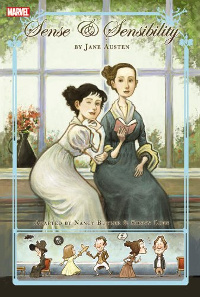
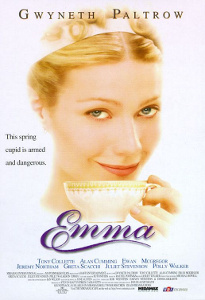
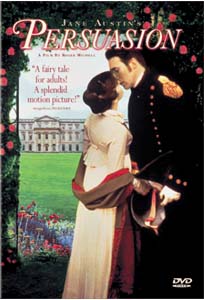
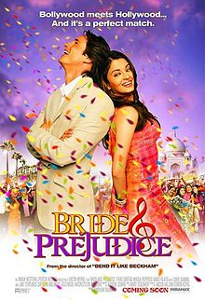
 My students often find self-reflexivity or analysis of their own historical moment and
context, a prominent characteristic of Austen’s novels, much
more difficult than analysis of the Georgian context.
Therefore, I model informally the critique of popular culture
artifacts before asking students to do this work themselves. I
bring in my Jane Austen action figure on the first day of class and
ask students what they think it says about the owner. Early
responses tend to characterize Austen’s work as “romantic”
and the Austen fan as a giddy, heterosexual female nostalgic for
empire-waisted gowns. I play devil’s advocate, but
gently, with questions such as “Why is she an action figure and
not a doll? What’s the difference? Why does she
have a quill poised so menacingly in her hand?” Though
the polite, feminized, romanticized version of Jane Austen and her
work informs much of what Hollywood peddles, it also informs the
satire of the likes of Jane Austen’s Fight Club.
My students often find self-reflexivity or analysis of their own historical moment and
context, a prominent characteristic of Austen’s novels, much
more difficult than analysis of the Georgian context.
Therefore, I model informally the critique of popular culture
artifacts before asking students to do this work themselves. I
bring in my Jane Austen action figure on the first day of class and
ask students what they think it says about the owner. Early
responses tend to characterize Austen’s work as “romantic”
and the Austen fan as a giddy, heterosexual female nostalgic for
empire-waisted gowns. I play devil’s advocate, but
gently, with questions such as “Why is she an action figure and
not a doll? What’s the difference? Why does she
have a quill poised so menacingly in her hand?” Though
the polite, feminized, romanticized version of Jane Austen and her
work informs much of what Hollywood peddles, it also informs the
satire of the likes of Jane Austen’s Fight Club.